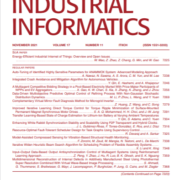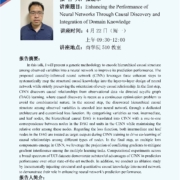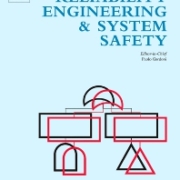Research paper accepted by IEEE Transactions on Industrial Informatics
Accurate and reliable prediction of bearing remaining useful life (RUL) is crucial to the prognostics and health management (PHM) of rotation machinery. Despite the rapid progress of data-driven methods, the generalizability of data-driven models remains an open issue to be addressed. In this paper, we tackle this challenge by resolving the feature misalignment problem that arises in extracting features from the raw vibration signals. Towards this goal, we introduce a logarithmic cumulative transformation (LCT) operator consisting of cumulative, logarithmic, and another cumulative transformation for feature extraction. In addition, we propose a novel method to estimate the reliability associated with each RUL prediction by integrating a linear regression model and an auxiliary exponential model. The linear regression model rectifies bias from neural network’s point predictions while the auxiliary exponential model fits the differential slopes of the linear models and generates the upper and lower bounds for building the reliability indicator. The proposed approach comprised of LCT, an attention GRU-based encoder-decoder network, and reliability evaluation is validated on the FEMETO-ST dataset. Computational results demonstrate the superior performance of the proposed approach several other state-of-the-art methods.
Dr. Xiaoge Zhang delivered a talk on “Enhancing the Performance of Neural Networks Through Causal Discovery and Integration of Domain Knowledge” at Sichuan University, China
In this talk, I will present a generic methodology to encode hierarchical causal structure among observed variables into a neural network to improve its prediction performance. The proposed causality-informed neural network (CINN) leverages three coherent steps to systematically map the structural causal knowledge into the layer-to-layer design of neural network while strictly preserving the orientation of every causal relationship. In the first step, CINN discovers causal relationships from observational data via directed acyclic graph (DAG) learning, where causal discovery is recast as a continuous optimization problem to avoid the combinatorial nature. In the second step, the discovered hierarchical causal structure among observed variables is encoded into neural network through a dedicated architecture and customized loss function. By categorizing variables as root, intermediate, and leaf nodes, the hierarchical causal DAG is translated into CINN with a one-to-one correspondence between nodes in the DAG and units in the CINN while maintaining the relative order among these nodes. Regarding the loss function, both intermediate and leaf nodes in the DAG are treated as target outputs during CINN training to drive co-learning of causal relationships among different types of nodes. In the final step, as multiple loss components emerge in CINN, we leverage the projection of conflicting gradients to mitigate gradient interference among the multiple learning tasks. Computational experiments across a broad spectrum of UCI datasets demonstrate substantial advantages of CINN in prediction performance over other state-of-the-art methods. In addition, we conduct an ablation study by incrementally injecting structural and quantitative causal knowledge into neural network to demonstrate their role in enhancing neural network’s prediction performance.
Research paper accepted by Reliability Engineering and Systems Safety
Risk management often involves retrofit optimization to enhance the performance of buildings against extreme events but may result in huge upfront mitigation costs. Existing stochastic optimization frameworks could be computationally expensive, may require explicit programming, and are often not intelligent. Hence, an intelligent risk optimization framework is proposed herein for building structures by developing a deep reinforcement learning-enabled actor-critic neural network model. The proposed framework is divided into two parts including (1) a performance-based environment to assess mitigation costs and uncertain future consequences under hazards and (2) a deep reinforcement learning-enabled risk optimization model for performance enhancement. The performance-based environment takes mitigation alternatives as input and provides consequences and retrofit costs as output by utilizing several steps, including hazard assessment, damage assessment, and consequence assessment. The risk optimization is performed by integrating performance-based environment with actor-critic deep neural networks to simultaneously reduce retrofit costs and uncertain future consequences given seismic hazards. For illustration, the proposed framework is implemented on a portfolio with numerous building structures to demonstrate the new paradigm for intelligent risk optimization. Also, the performance of the proposed method is compared with genetic optimization, deep Q-networks, and proximal policy optimization.




